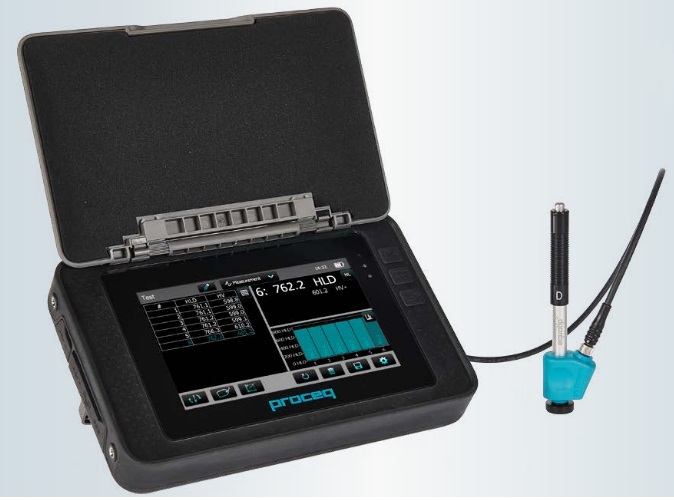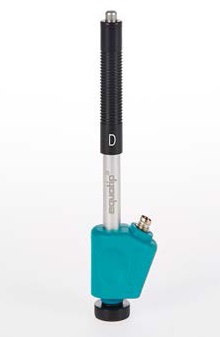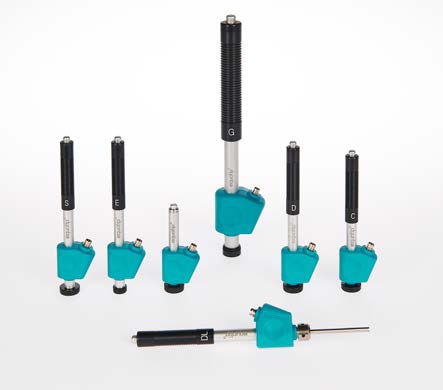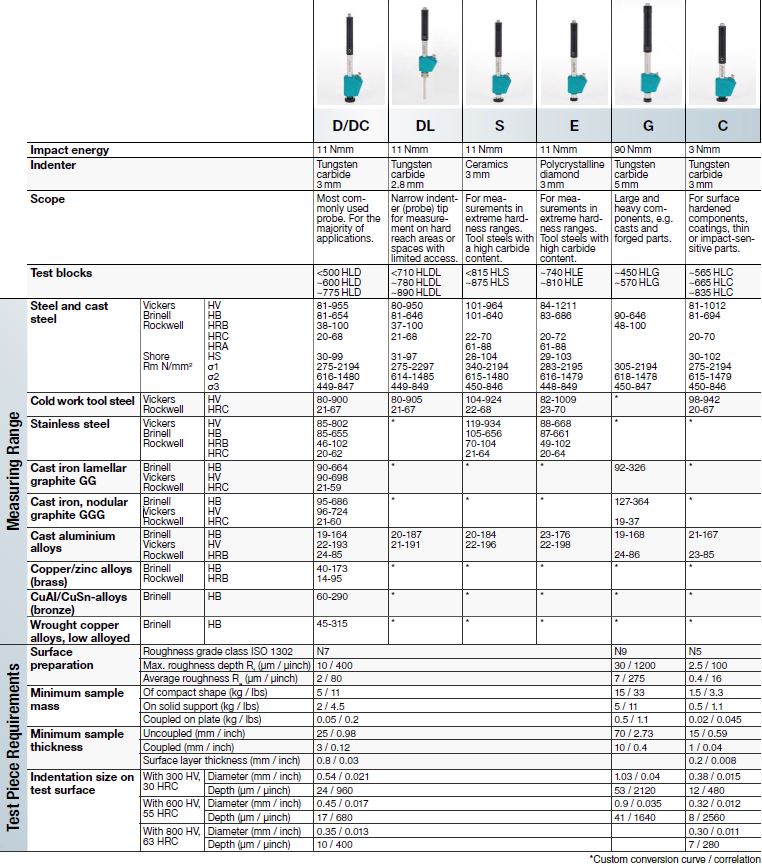Equotip 550 Leeb - Portable Metal Hardness Tester
 The Equotip 550 is a versatile hardness tester for on-site testing of heavy, large or installed parts. It is compatible with upcoming developments, such as other measuring principles and new types of probes etc. The new-generation display unit with touchscreen leverages the high measuring accuracy with an unmatched user experience leading to increased measurement efficiency. It also comes loaded with interactive wizards, handpicked for specific industry applications in order to increase reliability and to assure precise measurements, including oil & gas, automotive, aerospace and steelworking applications.
The Equotip 550 is a versatile hardness tester for on-site testing of heavy, large or installed parts. It is compatible with upcoming developments, such as other measuring principles and new types of probes etc. The new-generation display unit with touchscreen leverages the high measuring accuracy with an unmatched user experience leading to increased measurement efficiency. It also comes loaded with interactive wizards, handpicked for specific industry applications in order to increase reliability and to assure precise measurements, including oil & gas, automotive, aerospace and steelworking applications.
Leeb rebound hardness testing is mainly used for on-site testing of heavy, large or already installed metal parts, but is also applied for testing composites, rubber and rock. An Equotip 550 is a future-proof investment as it can be extended with additional test methods and features currently in development. Because of this, the Equotip 550 is the hardness testing instrument that offers you the maximum flexibility of portable hardness testing applications.
Theory
Leeb hardness principle is based on the dynamic (rebound) method. An impact body with a hard metal test tip is propelled by spring force against the surface of the test piece. Surface deformation takes place when the impact body hits the test surface, which results in loss of kinetic energy. This energy loss is detected by a comparison of velocities vi and vr when the impact body is at a precise distance from the surface for both the impact and rebound phase of the test, respectively. Velocities are measured using a permanent magnet in the impact body that generates an induction voltage in the coil which is precisely positioned in the impact device. The detected voltage is proportional to the velocity of the impact body. Signal processing is then providing the hardness reading.
Applications
- Fire damage assessment
- Engine cylinder
- Narrow automotive parts
- Aluminium castings
- Steel rolls
- Marine industry
- Energy sector
- Transmission gears
- Rolling mills
- How to create specific conversion curves
- Leeb and Portable Rockwell combined
- Automotive system integration
- Thermal cutting
- Stator wedge
- NDT of rock reference list
Benefits
- Use full Leeb probe portfolio and combine with Portable Rockwell and UCI
- Comes with the high accuracy known for all Equotip products
- Ready-to-go reports through powerful built-in reporting feature
Features
Firmware:
- Automatic compensation for impact direction
- Personalized user profiles and views
- Integration in automated testing environments (incl. remote control)
- 11 Languages and timezone supported
Software:
- Equotip Link PC Software allowing direct reporting and custom reports
Display & Memory:
- 7” color rugged touchscreen unit (800 x 480 pixels) with dual core processor
- Internal 8 GB flash memory (> 1’000’000 measurements)
Connections:
- USB host / device and Ethernet
Impact Device Selection
Support Rings
 Leeb hardness testers provide accurate measurements if the impact body has a certain position in the guiding tube at the moment of its impact onto the test surface. When testing flat samples with standard support rings, the spherical test tip is located precisely at the end of the guiding tube. However, when testing curved samples with the standard support rings, this may not always be the case. To ensure accurate measurements in all cases, Proceq offers a range of special support rings designed for measurements on curved sample surfaces.
Leeb hardness testers provide accurate measurements if the impact body has a certain position in the guiding tube at the moment of its impact onto the test surface. When testing flat samples with standard support rings, the spherical test tip is located precisely at the end of the guiding tube. However, when testing curved samples with the standard support rings, this may not always be the case. To ensure accurate measurements in all cases, Proceq offers a range of special support rings designed for measurements on curved sample surfaces.
Standards
The Equotip Leeb series of hardness testers are standardized in ASTM according to A956-06 “Standard Test Method for Leeb Hardness Testing of Steel Products”. This is the only ASTM standard that currently addresses testing with the Leeb method. The Leeb method measures the ratio of rebound velocity of a defined impact body launched against a surface at a defined velocity. Therefore the Leeb method measures the loss of kinetic energy during impact, and this is considered a dynamic technique. The accuracy of a Leeb test is dependent on proper test conditions – surface roughness, test piece thickness, and mass – which are defined in the A956 standard. The A956 standard is not known to be specifically referenced by any current API standard.
Touchscreen Unit
Simplified and improved usability on high resolution display
- Personalized screens - arrange the view according to your needs
- Elaborated user interface designed by industry experts for smooth operation
- Ergonomically designed and shock-absorbing rubberised housing that provides protection against dust and water splashes
- Connectors and circuits protected against dust and voltage spikes
- Durable and scratch-resistant touchscreen
- Operates in temperatures from -10°C to +50°C and in humidity up to 95%





